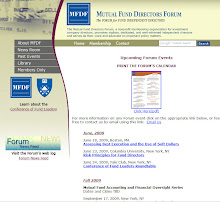The proposed framework consists of four broad components of comprehensive regulatory reform:
The proposal focuses mainly on addressing systemic risk, with promises to address the other three in the future. The systematic risk plan consists of:
- Addressing Systemic Risk: This crisis – and the cases of firms like Lehman Brothers and AIG – has made clear that certain large, interconnected firms and markets need to be under a more consistent and more conservative regulatory regime. It is not enough to address the potential insolvency of individual institutions – we must also ensure the stability of the system itself.
- Protecting Consumers and Investors: It is crucial that when households make choices to invest their savings we have clear rules of the road that prevent manipulation and abuse. While outright fraud like that perpetrated by Bernie Madoff is already illegal, these cases highlight the need to strengthen enforcement and improve transparency for all investors. Lax regulation also left too many households exposed to deception and abuse when taking out home mortgage loans.
- Eliminating Gaps in Our Regulatory Structure: Our regulatory structure must assign clear authority, resources, and accountability for each of its key functions. We must not let turf wars or concerns about the shape of organizational charts prevent us from establishing a substantive system of regulation that meets the needs of the American people.
- Fostering International Coordination: To keep pace with increasingly global markets, we must ensure that international rules for financial regulation are consistent with the high standards we will be implementing in the United States. Additionally, we will launch a new, three-pronged initiative to address prudential supervision, tax havens, and money laundering issues in weakly-regulated jurisdictions.
- A Single Independent Regulator With Responsibility Over Systemically Important Firms and Critical Payment and Settlement Systems. The Treasury calls for the identifying and defining what constitutes a systematically important firm, focusing regulation on what these firms do, not what legal or business form they have, and clarifying regulatory authority over payment and settlement activities.
- Higher Standards on Capital and Risk Management for Systemically Important Firms. This step includes setting more robust capital requirements for these firms, imposing stricter liquidity, counterparty and credit risk management requirements, and creating a regulatory regime that allows for prompt corrective action as capital levels decline, similar to the powers the FDIC possesses with regard to its covered agencies.
- Registration of All Hedge Fund Advisers With Assets Under Management Above a Moderate Threshold. Treasury hopes to close the gaps and weaknesses in regulation and enforcement of broker-dealers, investment advisers, and funds by requiring all hedge funds to register, mandating investor and counterparty disclosures, and reporting to a systematic risk regulator.
- A Comprehensive Framework of Oversight, Protections and Disclosure for the OTC Derivatives Market. Risks reltated to OTC securities may be mitigated by regulating credit default swaps and OTC derivateives, instituting a strong oversight regime upon the dealers and users of OTC securities, clearing all contracts through designated central counterparties, requiring customized derivatives to be subject to robust reporting, documentation, and confirmation standards, making aggregated data on trading volumes and positions readily available, and applying robust eligibility requirements for market participants wishing to use these OTC securities.
- New Requirements for Money Market Funds to Reduce the Risk of Rapid Withdrawals. Though providing few details of this proposal, this is a call for more stringent regulation of money funds.
- A Stronger Resolution Authority to Protect Against the Failure of Complex Institutions. The framework proposes that the Treasury and FDIC would be empowered to decide whether to assist a struggling institution or put it into conservatorship/receivership. Similar to the current resolution authority the FDIC has over banks, the conservator/receiver would have broad powers to fundamentally restructure an institution or to sell its assets and liabilities.





